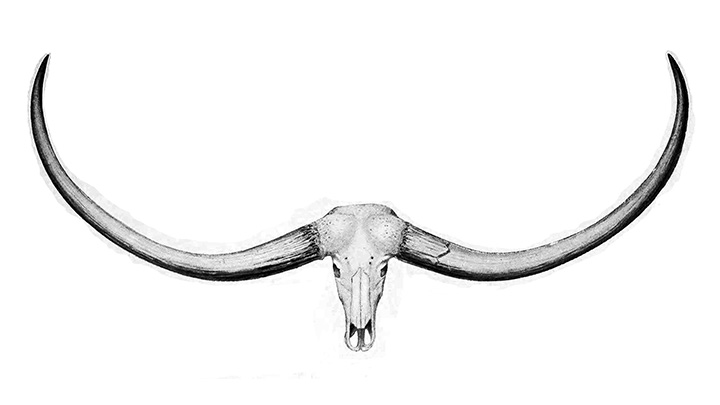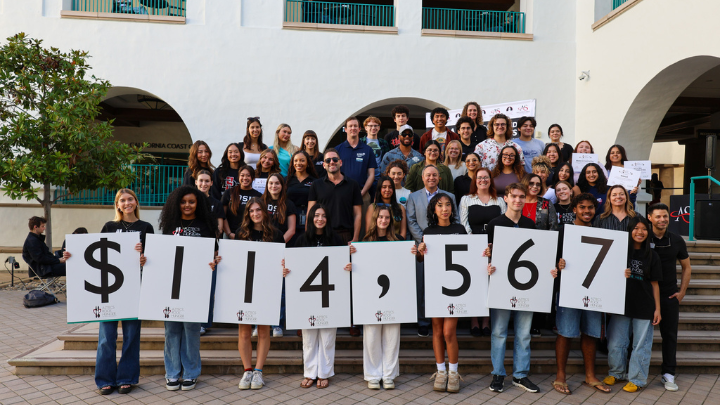Looking to the past to prevent future extinction
San Diego State University anthropologists created a computational model to predict the likelihood of animal extinctions based on the complex interaction of hunting and environmental change.

During the Late Pleistocene, California — at least at its lower elevations — was teeming with vegetation. While much of North America was covered in Ice Age glaciers, here, mastodons lumbered across verdant meadows, stopping to feed on brush, warily eyeing the forest’s edge for saber-tooth cats on the prowl for their calves.
Humans also flourished along the coastline, which extended hundreds of feet below where it is today.
But by 11,000 years ago, mastodons were extinct. Today, scientists are still debating the reasons for their demise: did human hunting do them in? Climate change? A cataclysmic event? Diminishing genetic diversity? Or some combination of factors?
Explaining what caused the extinctions of large animal species like the mastodon is often fraught due to the difficulty of piecing together an accurate picture of the past based on fragmentary evidence about the human and environmental pressures that may have contributed to their disappearance.
Now, San Diego State University researchers report in the journal Quaternary Research that they have created a computational model to help predict the likelihood of large animal extinctions. Their model accounts for the complexity of human-animal interactions, life history traits and environmental change and tests variations of these anthropogenic and environmental pressures.
The “megafauna hunting pressure model” could ultimately inform conservation management strategies and policy during a time when animal extinctions are skyrocketing, according to co-authors Miriam Kopels (’22, M.A., Anthropology) — now a Ph.D. student at the University of Nevada, Las Vegas — and Isaac Ullah, associate professor of anthropology.
“We have carefully crafted the model with understandings from anthropology and archaeology about human behavior and how humans interact with nature,” said Ullah. “We're taking that knowledge and information and encapsulating it so that it can be applied to other cases.”
Herds of giant buffalo
In developing their model, Kopels and Ullah turned to the case of Syncerus antiquus — also called the Giant African buffalo — a large grazing ungulate whose horns could reach nearly 10 feet from tip to tip. The species coexisted with humans for several hundred thousand years in Africa before going extinct between 12,000 and 10,000 years ago. There is no consensus in the scientific community about which factors contributed most to its extinction, according to the researchers.
“Some people have said these animals just died because of the climate changes associated with the end of the Ice Age, and other people are saying no, humans did it, and this debate has sort of raged with no clear winner, because both of those arguments are reasonable, both of them can be supported with the empirical evidence that exists,” said Ullah.
In their case study, Kopels and Ullah considered how human behavior, the animal’s behavior and demographics, and environmental factors interacted to form a social-ecological system which adapts to changes over time. They based some of their inputs on known life history characteristics of the Cape buffalo (Syncerus caffer) — a related species which is still living today — and adjusting them based on differences in the animals’ sizes, for example.
They ran computer simulations to see how populations of Syncerus antiquus would fare under 24 scenarios involving different human hunting pressures and preferences and environmental conditions, including the patchiness of their grassland habitat and length of the growing season.
“If the animal was more like this and if people were doing hunting strategies more like that, and the climate was a little bit like this, what would happen? And we can tweak the variables as we do it, and actually understand the percentage of times that this hunting strategy in this climate, this environment, with this species is going to lead to an extinction event,” said Ullah.
After running the simulations 40 times for each scenario, the researchers calculated the probability that a Syncerus antiquus population would go extinct.
Kopels and Ullah found that when male buffalo were aggressive — leading hunters to target females instead — localized extinction was much more likely. When the climate and food source were unreliable, extinction occurred more rapidly.
“Those particular animals are really important for the population dynamics,” said Ullah. “If you reduce the number of breeding females by just a small amount, you disrupt the entire breeding cycle for these slow reproductive, large bodied animals, and just over a few decades that can have a really major impact.”
The simulations show that extinction will not occur in every scenario where hunting pressure is high or environmental conditions are unfavorable, the researchers conclude in their paper —whether looking at the paleoanthropological record or to the future. But certain combinations of these conditions will feedback on each other to enhance the likelihood of extinction, helping to explain why some species have gone extinct but not others.
“If you just change some parameters, you can create a version of the model that takes into account the reproductive biology of any animal,” said Ullah.
Preventing future extinctions
Ullah is in the process of applying the model to heritage cattle in the American Southwest in order to develop an understanding of how to plan for sustainability under changing climatic conditions.
In the face of the current mass extinction crisis, he thinks it could also be applied to wildlife species at risk of extinction today, from black rhinos to desert tortoises, helping to identify tipping points where the species are most vulnerable, thus allowing conservationists to develop more effective strategies to protect them.
“We hope that conservation professionals will utilize this tool to simulate how predation, environmental constraints, and animal life history all interact to increase – or decrease – the odds of an extinction event,” said Kopels.



